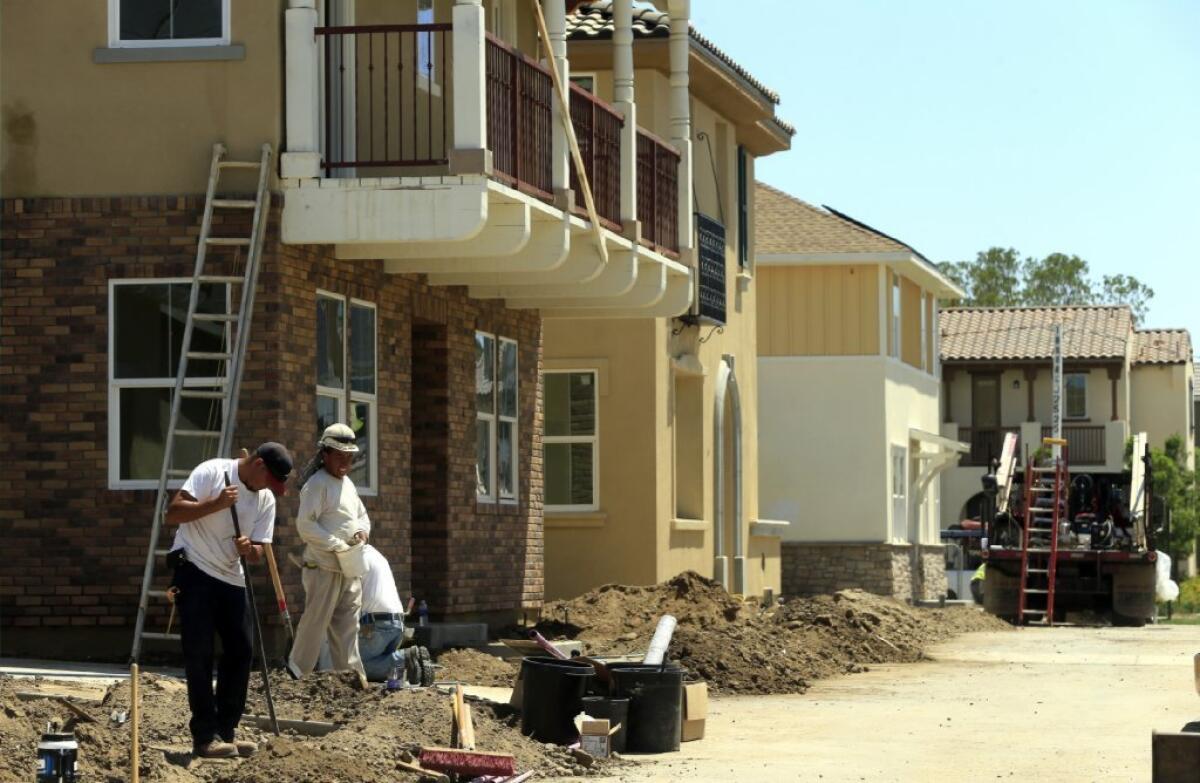Mortgage rates fall; 30-year averaging 3.66%, Freddie Mac says

New homes under construction in Irvine in 2014.
- Share via
Fixed mortgage rates moved lower this week on news of weakness in the labor markets, with Freddie Mac saying lenders were offering conventional 30-year loans at an average of 3.66%, down from last week’s 3.7%
The average offering rate for 15-year loans, which are popular with refinancers, dropped to 2.93%, from 2.98%, the home finance giant reported.
In the latest sign that economic growth may be slowing, the Labor Department said Thursday that claims for first-time unemployment benefits rose last week from a 15-year low set the previous week.
Jobs are a key indicator for analysts considering when the Federal Reserve may increase a benchmark short-term lending rate from near zero, where it has been held since the 2008 financial crisis to stimulate the economy.
If the Fed begins to raise the rate later this year, it could also affect long-term interest rates such as those for mortgages, although the Fed has no direct control over the long rates.
Keith Gumbinger, vice president of HSH.com, which tracks mortgage rates day to day, said other economic reports in recent weeks also have suggested that the economy has lost some momentum, allowing interest rates to ease.
“The employment report for March was rather weak, breaking a year-long string of solid gains in hiring,” Gumbinger wrote.
“Is this just a dim patch in an otherwise bright pattern, or is it something more? It’s hard to know with any certainty, but it should give the Federal Reserve something to consider as it pertains to the timing of any interest rate increase.”
Freddie Mac asks lenders early each week about the terms that they are offering to solid borrowers seeking mortgages of up to $417,000 that conform to the guidelines of Freddie Mac and Fannie Mae, the nation’s major mortgage financing companies.
The borrowers would have paid a little more than half of 1% of the loan balance in upfront lender fees and discount points to obtain the rates. Payments for such services as appraisals and title insurance are not included.
The survey provides a consistent gauge of mortgage trends, but actual rates adjust constantly and are influenced by many factors.
In addition to borrowers’ credit histories and debt loads, the factors include whether the borrowers opt for zero-cost loans at higher rates or pay extra to lenders initially to lower the rates.
Follow @ScottReckard for news of banks and home loans
More to Read
Inside the business of entertainment
The Wide Shot brings you news, analysis and insights on everything from streaming wars to production — and what it all means for the future.
You may occasionally receive promotional content from the Los Angeles Times.











